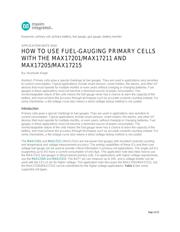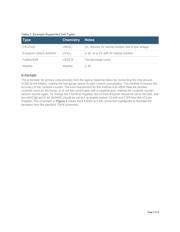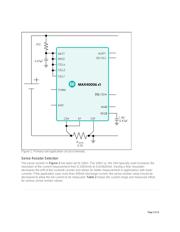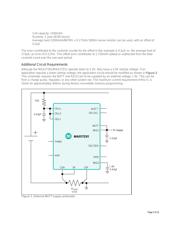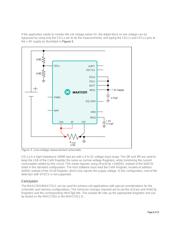下载

Keywords:
primary cell, primary battery, fuel gauge, gas gauge, battery monitor
APPLICATION NOTE 6416
HOW TO USE FUEL-GAUGING PRIMARY CELLS
WITH THE MAX17201/MAX17211 AND
MAX17205/MAX17215
By:
Hushnak Singh
Abstract: Primary cells pose a special challenge to fuel gauges. They are used in applications very sensitive
to current consumption. Typical applications include smart sensors, smart meters, fire alarms, and other IoT
devices that must operate for multiple months or even years without charging or changing batteries. Fuel
gauges in these applications must not become a dominant source of power consumption. The
nonrechargeable nature of the cells means the fuel gauge never has a chance to learn the capacity of the
battery, and must achieve the accuracy through techniques such as accurate coulomb counting instead. For
some chemistries, a flat voltage curve also means a direct voltage lookup method is not usable.
Introduction
Primary cells pose a special challenge to fuel gauges. They are used in applications very sensitive to
current consumption. Typical applications include smart sensors, smart meters, fire alarms, and other IoT
devices that must operate for multiple months, or even years, without charging or changing batteries. Fuel
gauges in these applications must not become a dominant source of power consumption. The
nonrechargeable nature of the cells means the fuel gauge never has a chance to learn the capacity of the
battery, and must achieve the accuracy through techniques such as accurate coulomb counting instead. For
some chemistries, a flat voltage curve also means a direct voltage lookup method is not usable.
The
MAX17201 and MAX17211 (MAX172x1) are low-power fuel gauges with excellent coulomb counting
and temperature and voltage measurement accuracy. The analog capabilities of these ICs and their core
voltage fuel gauge can be used to provide critical information in primary-cell applications. The single-cell ICs
(supporting up to 5V) have a current consumption of only 9µA. This application note describes how to use
the MAX172x1 fuel gauges in lithium-based primary cells. For applications with higher voltage requirements,
use the
MAX17205 and MAX17215. The BATT pin can measure up to 20V, and a voltage-divider can be
used with the CELLX pin for higher voltage. This application note discusses the MAX17201/MAX17211, but
the MAX17205/MAX17215 can be substituted for the higher voltage applications.
Table 1 lists some
supported cell types.
Page 1 of 11

